
[301] Rhus typhina, Staghorn Sumac
Introduction
Rhus typhina, Staghorn (or Stag’s Horn) Sumac, is a popular cultivated ornamental tree that is a close relative of [100] Smokebush but looks nothing like it. It has attractive, dark red fruits that look like flowers.
Other members and former members of the genus Rhus are also called Sumac, with various spellings.
Taxonomy
Kingdom – Plants
Division – Vascular Plants
Class – Angiosperms (Flowering Plants)
Order – Sapindales
Family – Anacardiaceae
Subfamily – Anacardioideae
Genus – Rhus
Scientific Name – Rhus typhina
Several cultivated varieties are available.
Name
See [100] Smokebush for Sumac. The staghorn reference is to the velvety branches like the covering of antlers.
Rhus comes from rhous, the Ancient Greek name for these trees. Typhina comes from Typha, the genus name of [349] Bulrush or Cattail – with its velvety flowers.
Description
The taxonomy of the genus Rhus has been variable. It is sometimes divided into subgenera and sections, and many species have been moved out.
Rhus typhina grows generally as a large shrub or small tree. The stems and petioles of the leaves are covered in purple-red hairs that give them a velvety look.
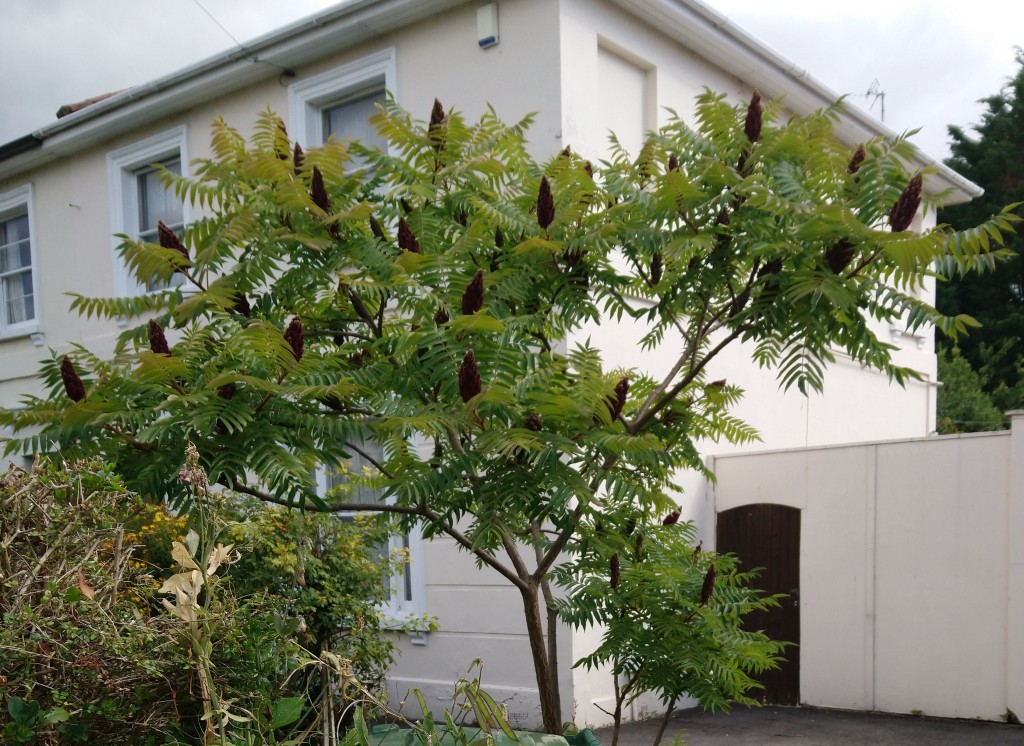
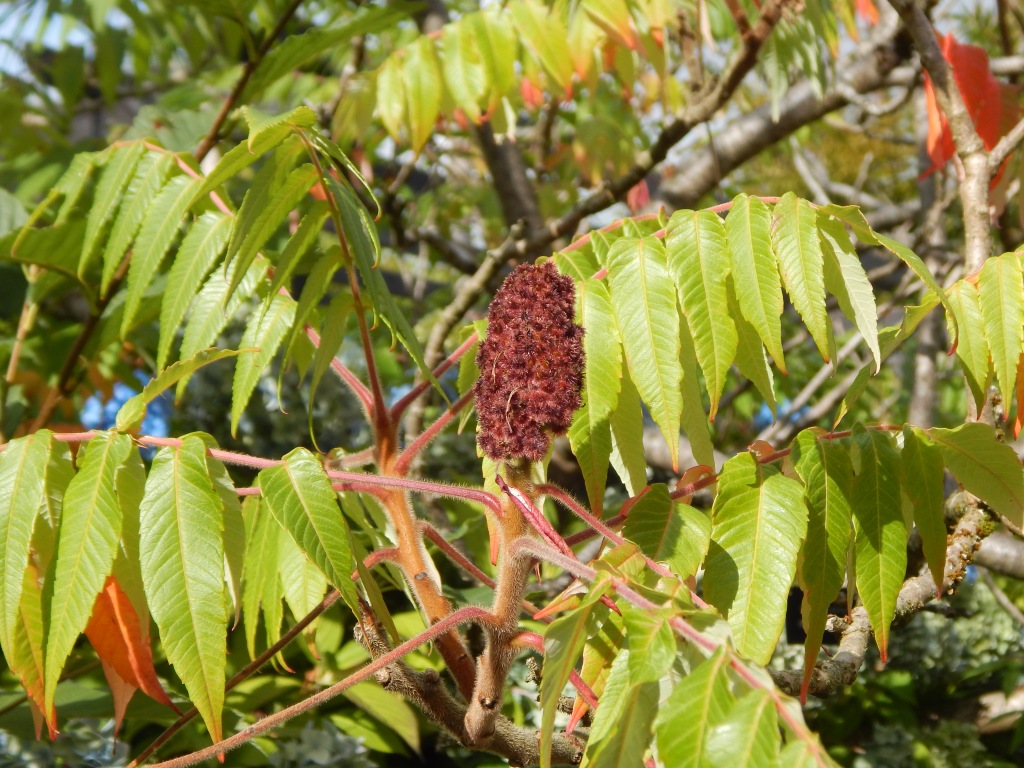
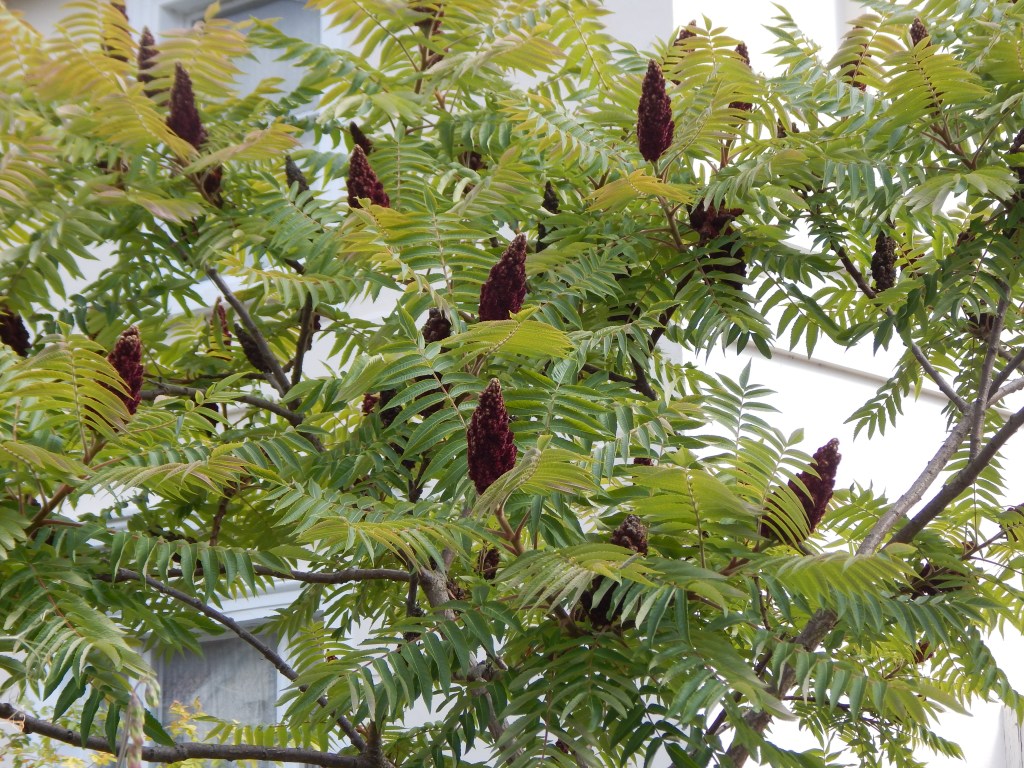
The long, compound leaves have up to thirty leaflets that are long, pointed, finely serrated and light green in colour, always including a terminal leaflet.

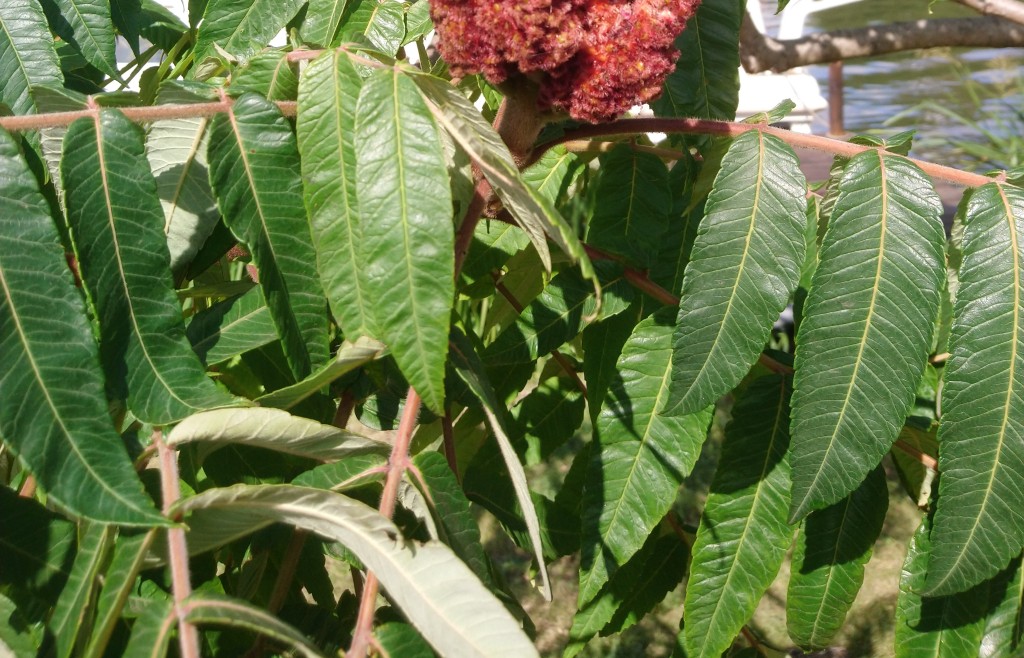


Until I started to write this post, I thought that they had large dark red/ purple flowers but these are actually infructescences. They are tightly bunched groups of small hairy fruits that look a lot like a large flower.

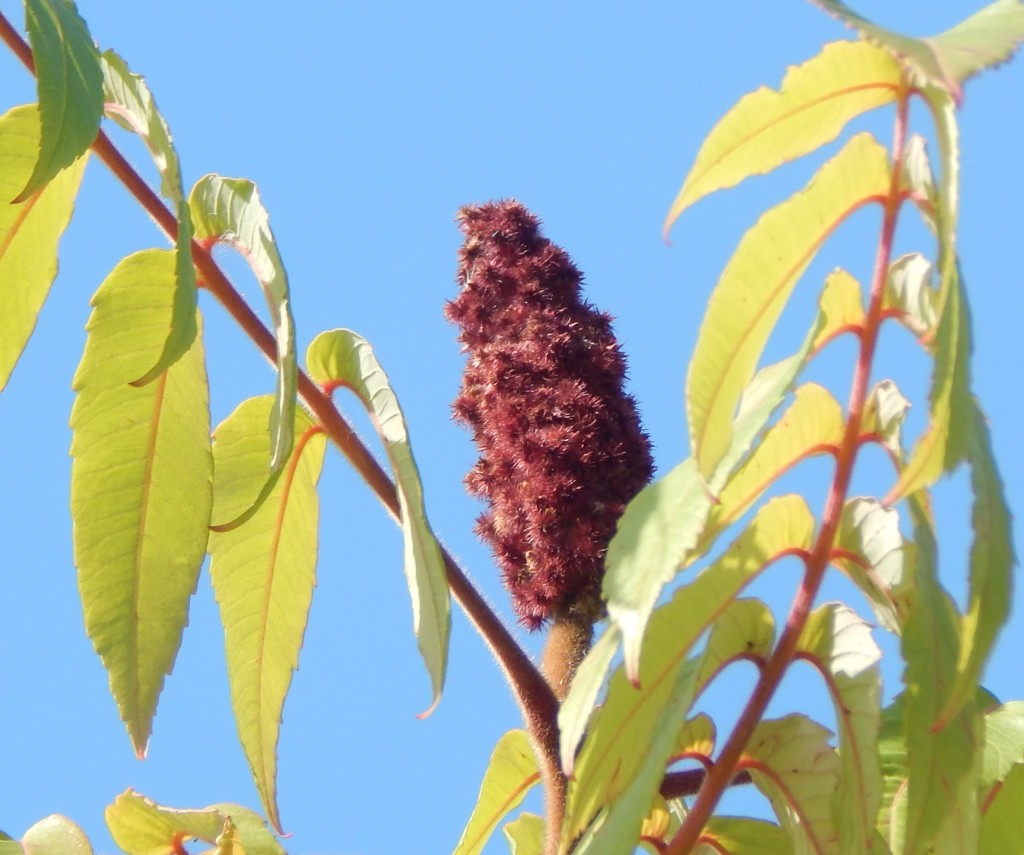
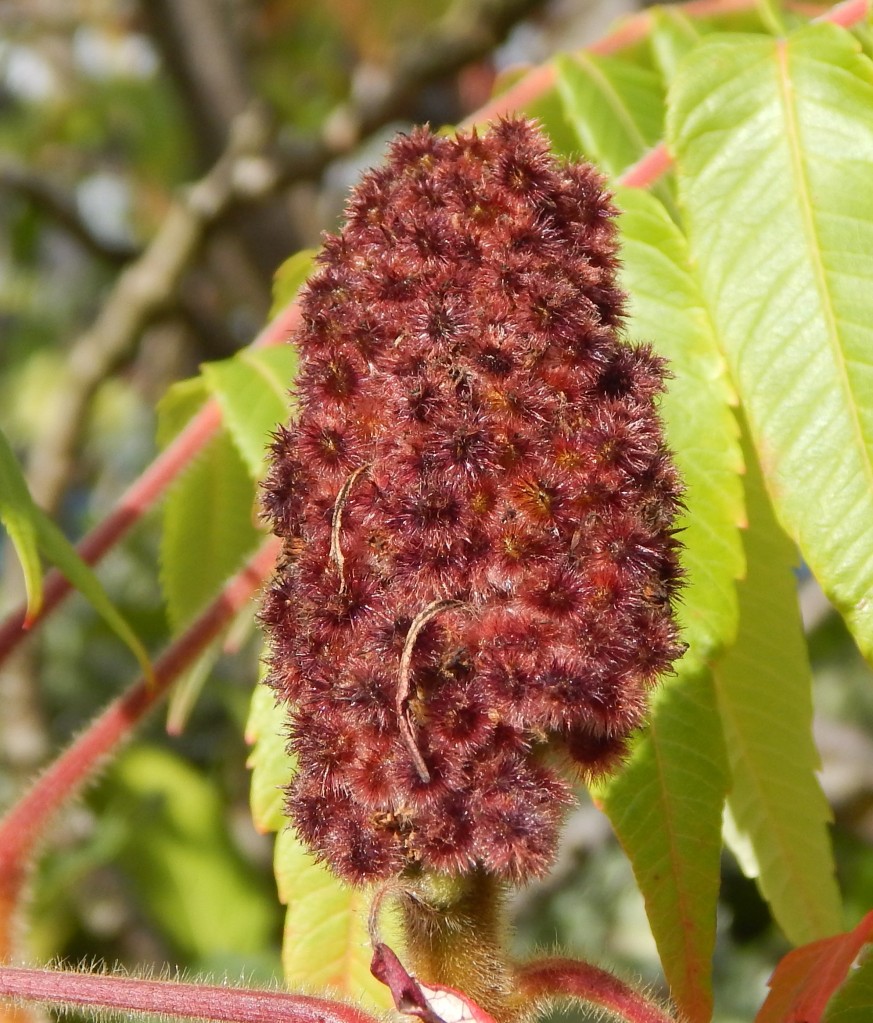
The flowers, which come earlier are tiny, insignificant and whitish green.
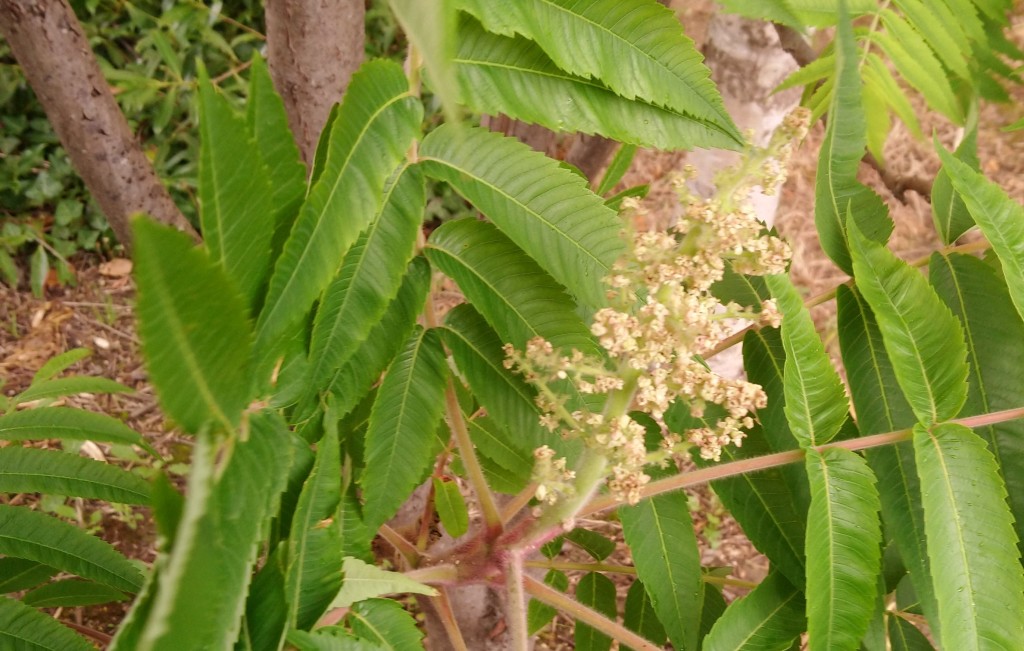
Habitat and use
Rhus typhina is native to an area more or less corresponding to North-east USA.
It is now widely cultivated throughout temperate areas for its attractive fruits and autumn leaves, together with a few other species of Rhus. Several varieties are available.

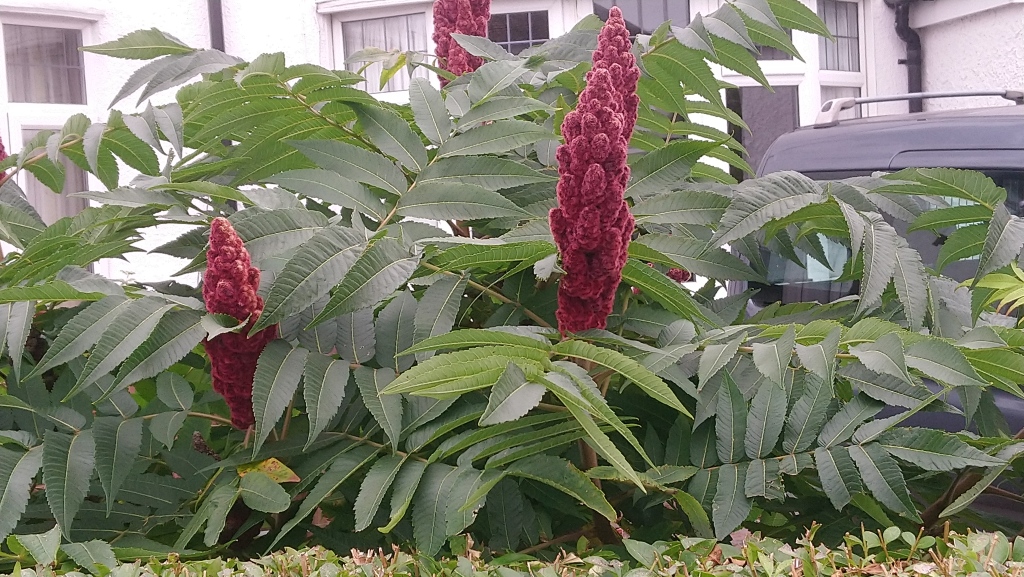
Dried fruits of several sumac species have been used as a crimson spice, particularly in the Middle East. The fruits have also been used to make a ‘pink lemonade’ drink.
The leaves and bark have traditionally been used in dying and tanning. As for almost everything, it was used in mediaeval medicine.
